This post may contain affiliate links.
This lavash bread recipe is easy, reliable and made with simple ingredients. Lavash is soft and perfect for wraps and sandwiches. Learn how to make this bread at home with this how-to tutorial and my notes and tips.
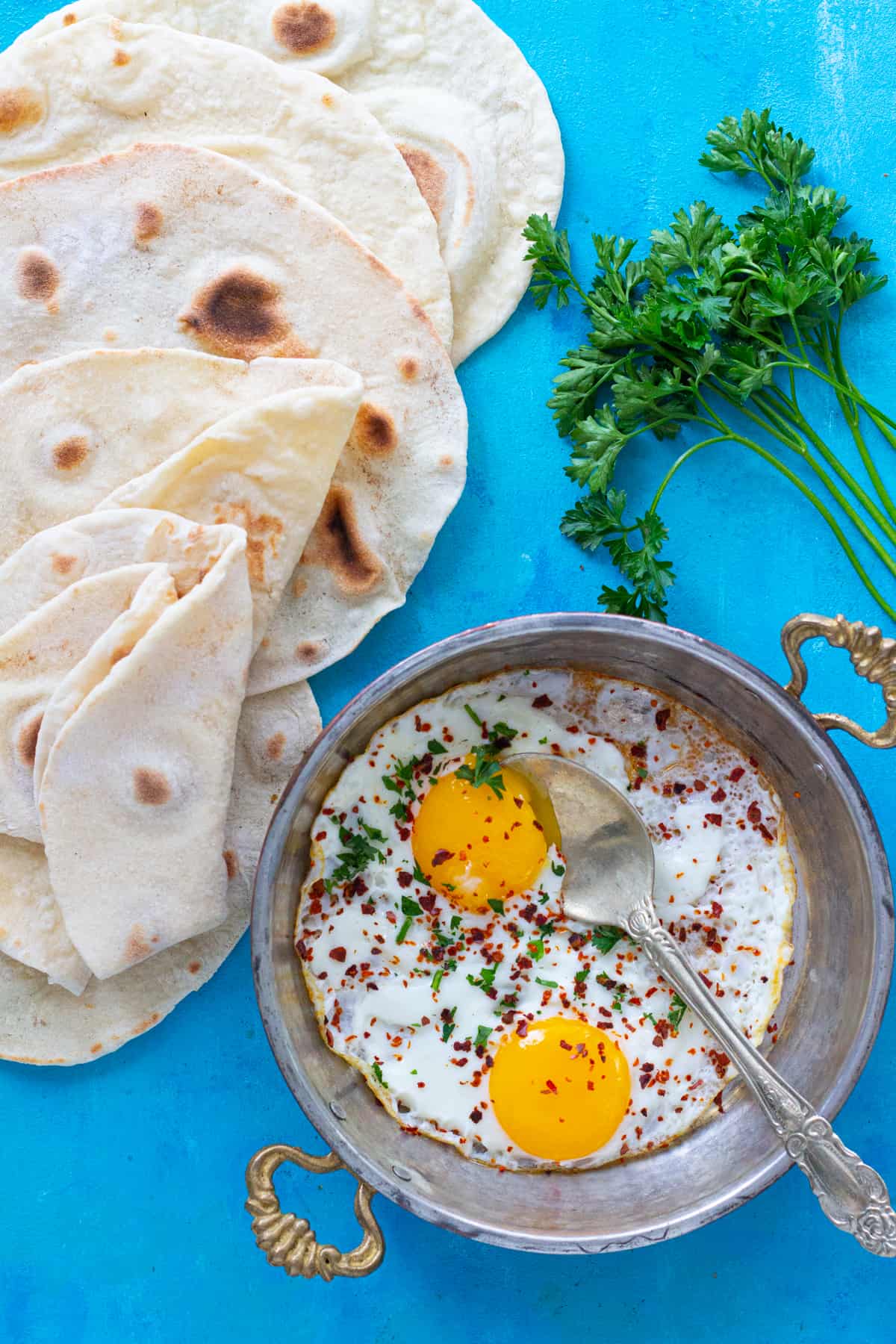
Nothing beats warm homemade bread and we have some of the best here! From our classic Persian barbari and bazlama to simit and no yeast naan, you can find a bread recipe that you like. Today I’m going to show you how to make lavash, a classic Middle Eastern bread that’s loved by many. This recipe is no fail and foolproof, you don’t need any specific skills to make it and it tastes delicious!

Table of Contents
Lavash bread – A simple staple of many cuisines
Lavash is a soft and flat bread that can be folded easily to make sandwiches and wraps. It’s popular in countries such as Armenia, Iran, Azerbaijan and Turkey. Traditionally, lavash is made in tanoor (brick or wood oven) or on saj Tava, however, you can also use a nonstick pan or griddle to make this bread.
As for the origin, there are debates about whether the bread is originally from, but most believe it’s from Armenia. However, it’s considered a regional staple and is used in various cuisines.
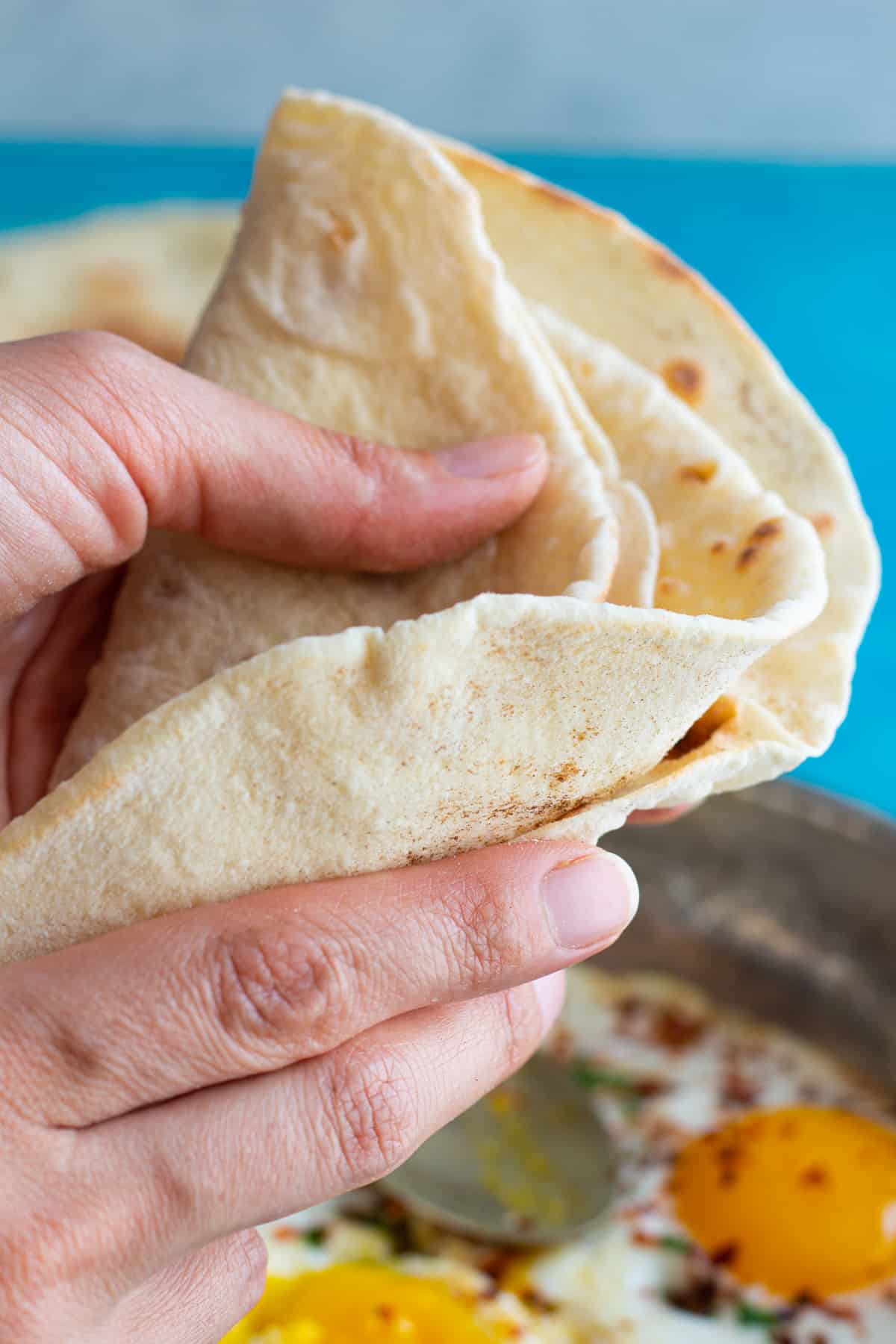
Ingredients
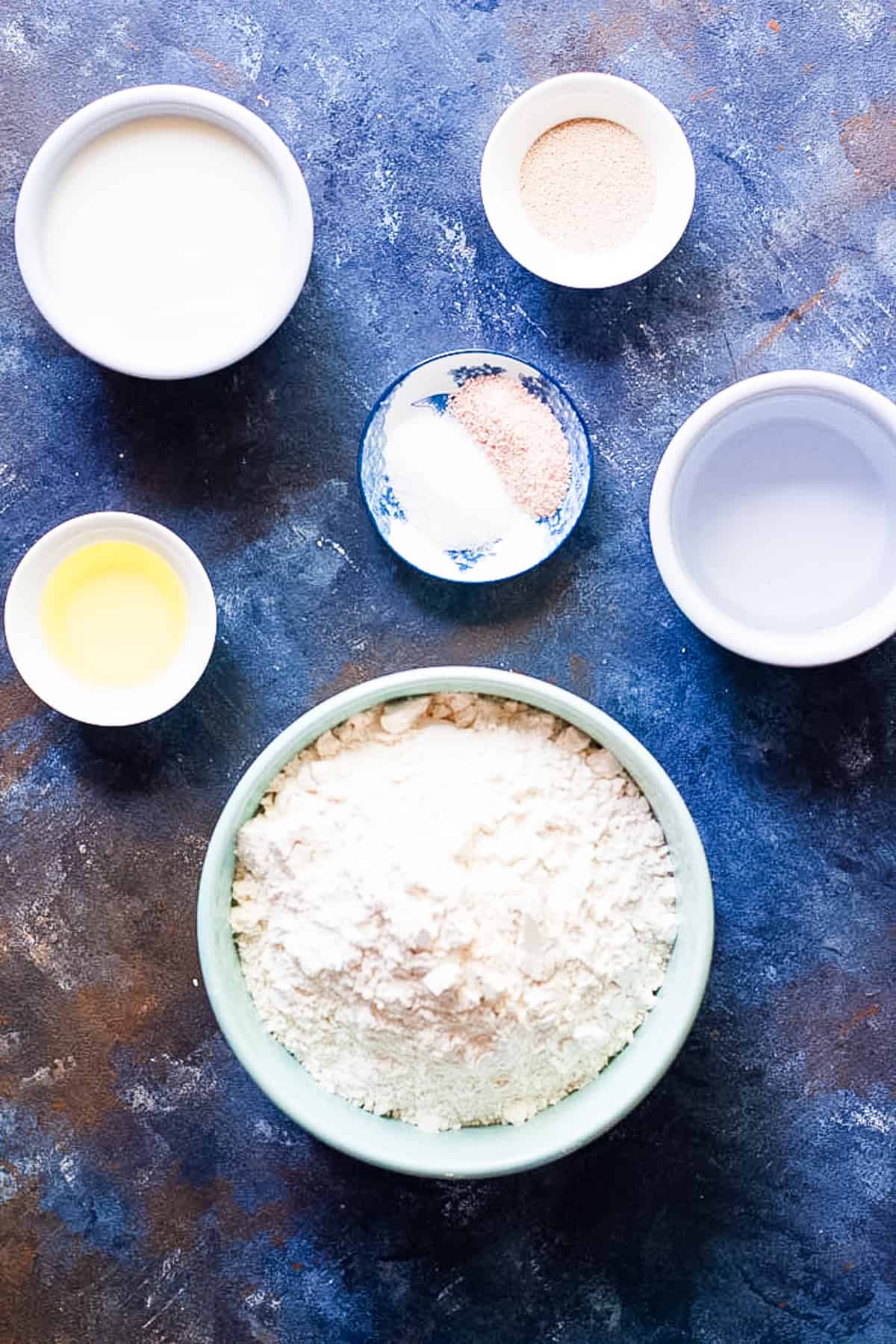
- Water and milk: Warm water and milk are the liquid part of this recipe. I use a combination of milk and water to make sure the dough is supple and soft and the flavor is perfect. It’s important the the milk and water are not too hot as it would kill the yeast or too cold and the yeast wouldn’t bloom. You can use 2% or whole milk.
- Vegetable oil: While my choice for this recipe is vegetable oil, you can use any other neutral flavored oil to make this recipe. I don’t suggest using butter since it would change the texture and flavor.
- Yeast: You can use instant or active dry yeast. If using active dry yeast, please activate it in water and milk for a few minutes before adding the rest of the ingredients.
- Flour: Regular all purpose flour works just fine for this recipe. If using whole wheat flour, don’t use more than 50% of the whole amount of flour used in the recipe since it would make the lavash dry and hard.
How to make lavash bread
This lavash recipe is easy, simple and foolproof. Simply mix, rise, shape and cook! Here is a step-by-step tutorial on how to make homemade lavash.
Make the dough
In a large bowl, mix warm water, warm milk, vegetable oil, sugar, salt and instant yeast to combine. Make sure your yeast is “instant” and doesn’t need extra time to activate.
Slowly add the flour to the water and milk mixture and mix so the dough comes together. You can use a stand mixer with a dough hook and knead for about 8 minutes until the dough comes together.
It’s also possible to make the dough by hand. Transfer the dough to a lightly flour surface and knead to about 10 minutes until it comes together. The dough will be just a bit sticky.
Rest and rise
Form the dough into a ball and rub some oil on the surface. Place it in a large bowl and cover with plastic wrap. Then leave in a draft-free place such as an off oven or microwave to rise for 40 minutes.
Shape the dough
After 40 minutes, punch down the dough gently and divide it into 20 pieces. Shape each dough into a ball and cover them all with a kitchen towel so they don’t dry.
Cook lavash in a pan
Heat a large nonstick pan over medium heat. Generously flour your surface and rolling pin. Grab one of the dough balls and cover the rest with the towel. Roll out the dough to be very thin. Place it on the pan and cook for about 45 to 60 seconds until bubbles start to appear. Flip and cook on the other side for 45 seconds until it’s fully cooked. Transfer to a plate and cover with a kitchen towel. Repeat with the remaining dough balls.
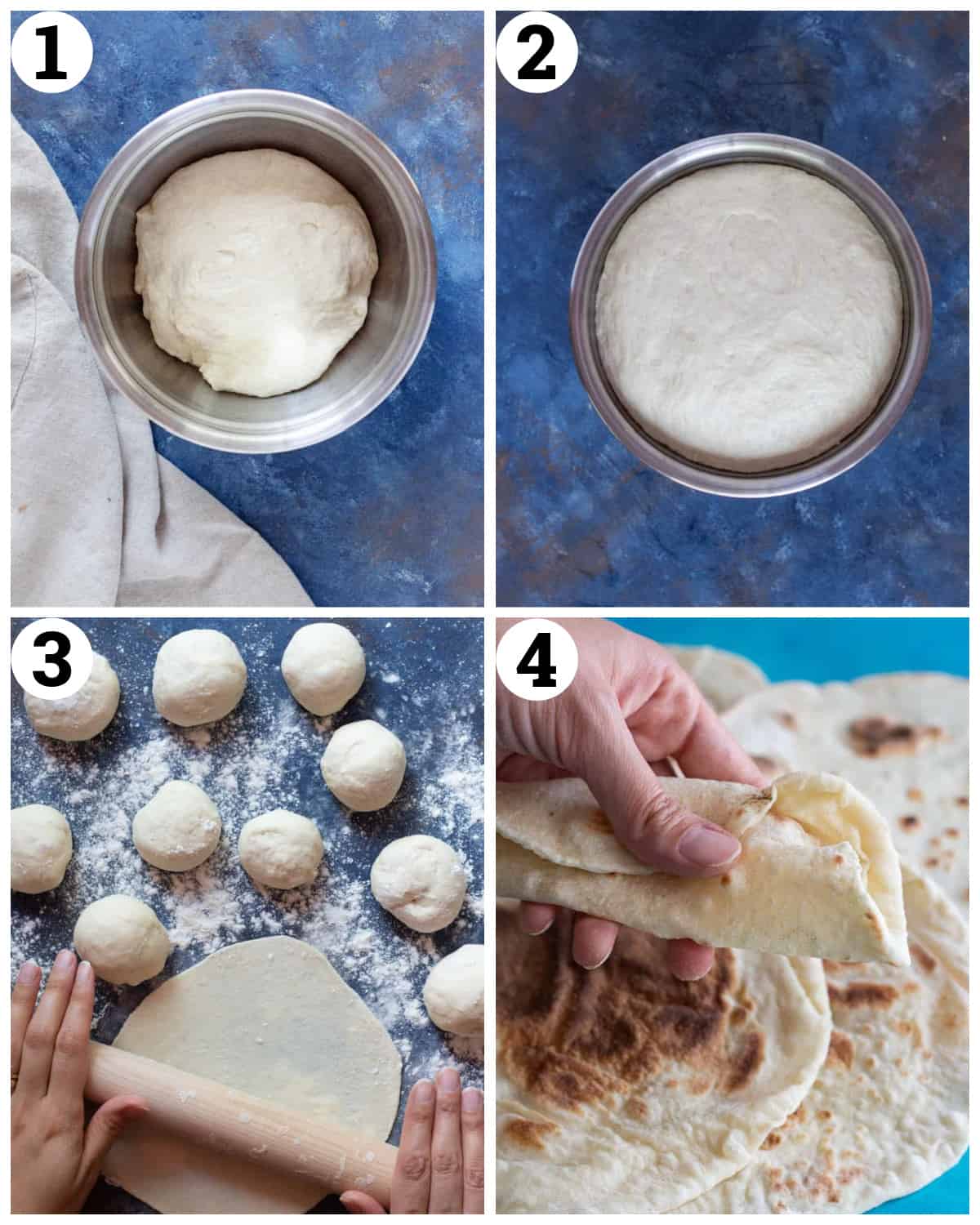
3 tips to make the best lavash
- Always keep a towel on the dough balls while rolling them out one by one. If not covered with a towel, the balls will develop a hard surface which would prevent the bread from bubbling.
- Make sure you dough is kneaded well. It should feel supple and soft but not too sticky. Avoid adding more flour than what is intended in the recipe.
- Keep a plate and a kitchen towel on the counter for the lavash breads that are cooked. Place each cooked lavash on the plate and immediately cover with a towel to avoid drying out. You can stack them.
Serving suggestions
Lavash is one of the most versatile breads and there are so many things you can do with it. Here are a few suggestions:
- Serve for breakfast with some fried eggs, cheese, labneh, jam or butter. It also goes well with dishes such as menemen (Turkish eggs and tomatoes), Cilbir (Turkish poached eggs in yogurt sauce) or nargesi (Persian eggs and spinach).
- Make a wrap with lavash, some kind of protein such as kofte kebab, shish kabob, shish tawook, beef shawarma, doner or joojeh kabab, greens, onions and tomatoes.
- Serve it on the side or soups and stews such as Moroccan chickpea stew or Mediterranean lentil soup.
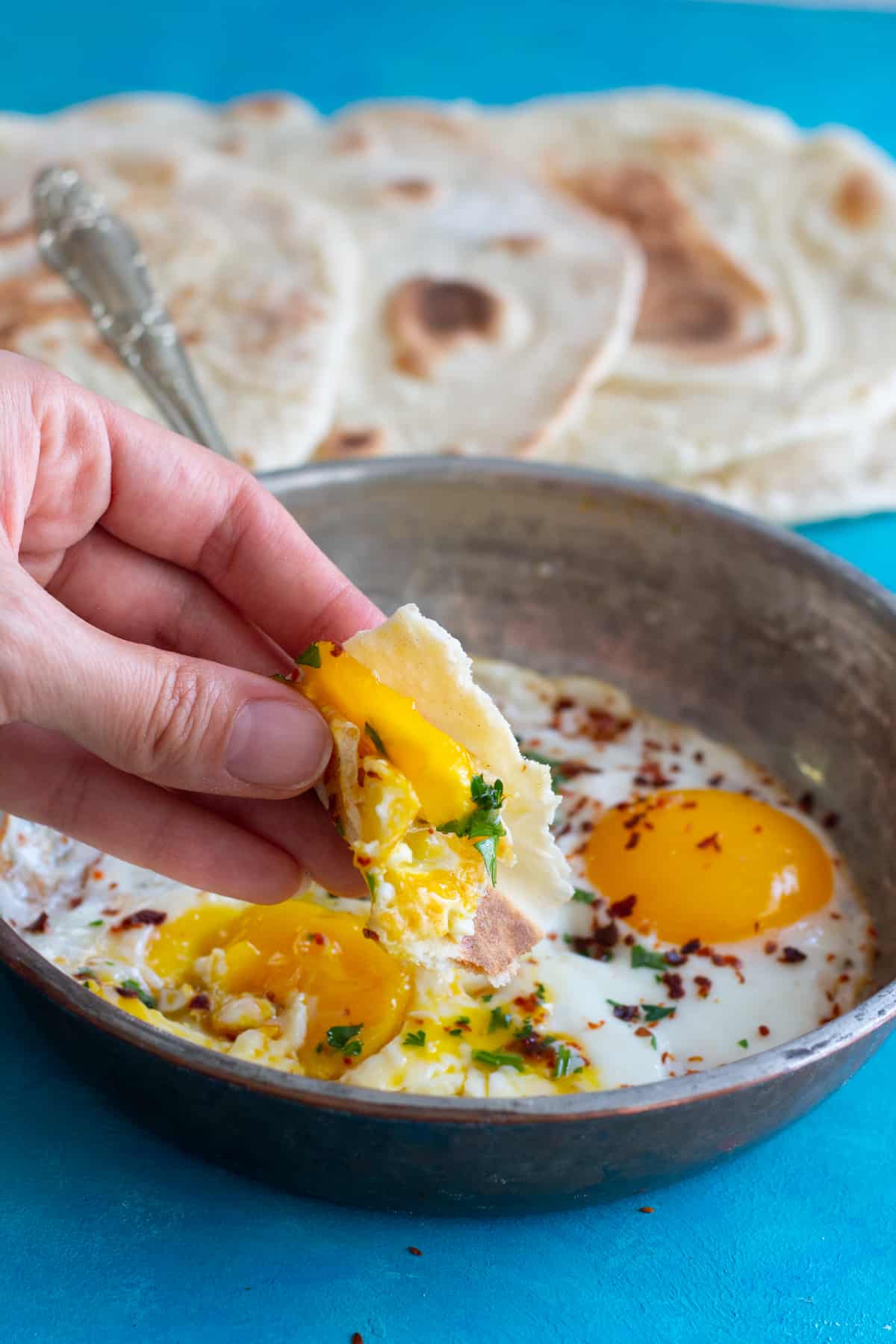
Storage
This is a homemade bread which means it doesn’t contain any preservatives and therefore, it won’t keep forever. Lavash keeps well for about two days in a bread bag at room temperature and then for up to a week if refrigerated.
Frequently asked questions
Flatbread is usually crispy whereas lavash is softer and can easily be folded. Lavash is also thinner than flatbread and is usually shaped into a circle.
The main reason for a dough not doing well is because of the yeast not being activated. If the liquid is too hot or too cold, the yeast will not activate. The ideal temperature is between 115°F and 120°F.
Lavash dries out easily therefore it’s best to keep it in a bread bag or a ziploc bag. However, if it dries a bit, sprinkle with just a few drops of water and then microwave for 10 seconds.
Classic lavash recipe uses yeast, however, you can make this no yeast flatbread that’s pretty similar to lavash in texture.
Yes, however, you have to make sure you’re using 1:1 gluten-free flour.
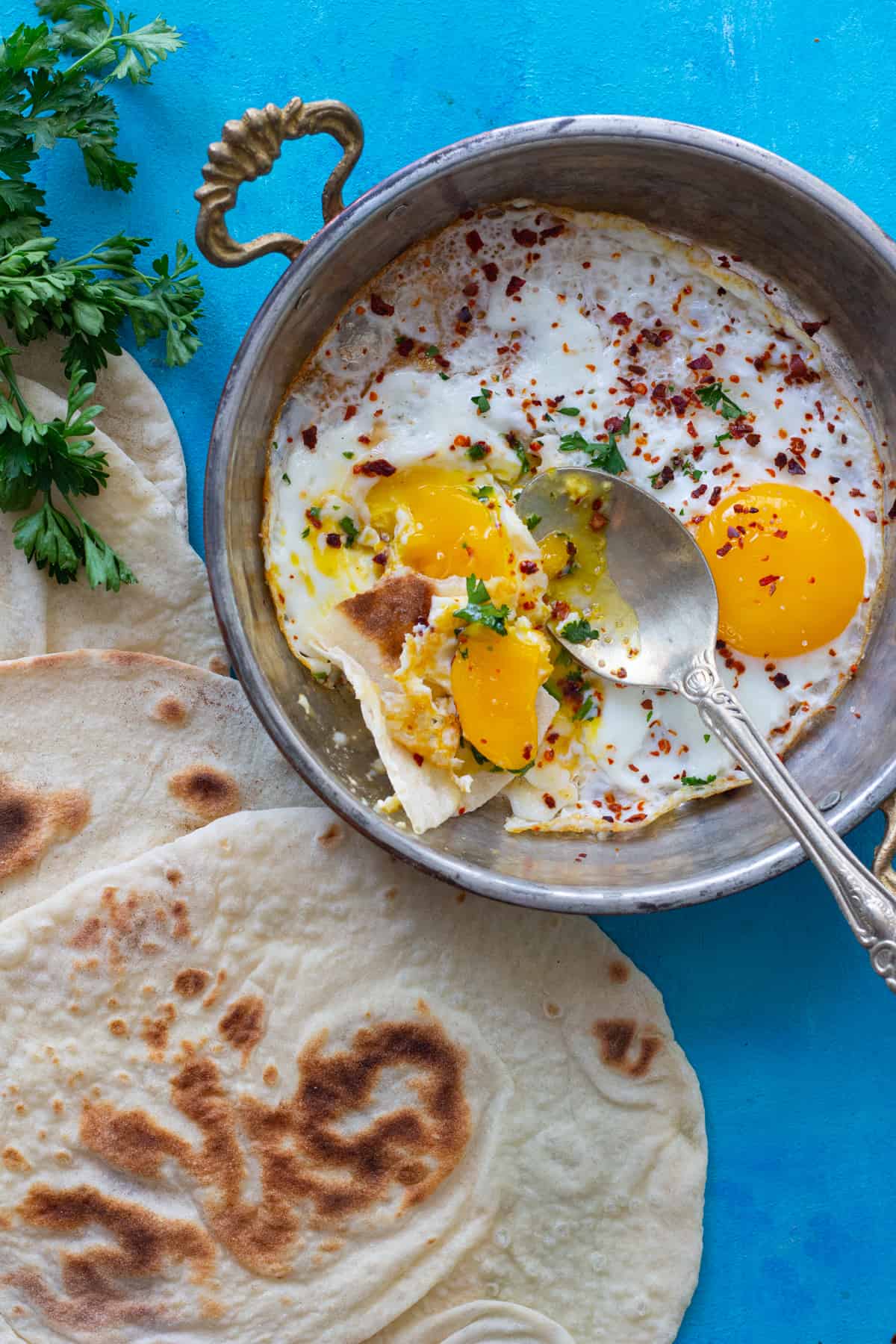
More Bread Recipes
Turkish Recipes
Turkish Pide (Turkish Flatbread)
All Recipes
Fatayer (Lebanese Savory Hand Pies)
Breads
Ciabatta Bread
Did you make this recipe? I’d love to hear about it! Please comment and leave a 5-star🌟 rating below. You can also follow us on Instagram, Facebook, Pinterest or subscribe to our newsletter to get a free e-Cookbook!
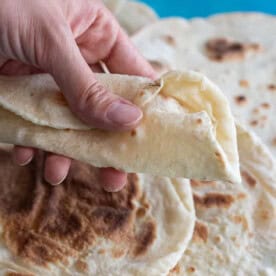
Lavash Bread
Ingredients
- 3/4 cup warm water
- 3/4 cup warm milk
- 1 tbsp vegetable oil , or other neutral flavored oils
- 1/2 tbsp granulated sugar
- 1 tsp salt
- 1 tbsp instant yeast
- 3 1/2 cup all purpose flour, plus more for dusting the surface
Instructions
- In a large bowl mix water, milk, oil, sugar, salt and instant yeast.
- Slowly add in the flour and mix using your hands or stand mixer until the dough comes together. This would take between 8 to 10 minutes. The dough will be a bit sticky.
- Rub a bit of oil all over the dough and place it in a large bowl. Cover and let it rise for 40 minutes. (I usually let mine rise in an "off" oven)
- After 40 minutes, gently deflate the dough and divide it into 20 pieces. shape each piece into a ball. Cover them all with a kitchen towel so they don't dry as you cook them.
- Heat a nonstick pan over medium heat. Flour your surface and your rolling dough very well. Place a dough ball on the surface and roll it out to be very thin.
- Place it on the hot pan and cook for 45 seconds to one minute. There will be bubbles. Flip and cook on the other side for about 30-45 seconds. Place the bread on a plate and cover with a kitchen towel.
- Repeat with the remaining dough.
Notes
- Make sure the water and milk are not too hot or too cold. If they are too hot, the yeast would die and if too cold, the yeast won’t activate. The ideal temperature is between 115°F and 120°F.
- Lavash dries out easily therefore it’s best to keep it in a bread bag or a ziploc bag. However, if it dries a bit, sprinkle with just a few drops of water and then microwave for 10 seconds.
- Make sure you dough is kneaded well. It should feel supple and soft but not too sticky. Avoid adding more flour than what is intended in the recipe.
- It’s important to keep a towel on the dough balls while rolling them out one by one. If not covered with a towel, the balls will develop a hard surface which would prevent the bread from bubbling.
- Keep a plate and a kitchen towel on the counter for the lavash breads that are cooked. Place each cooked lavash on the plate and immediately cover with a towel to avoid drying out. You can stack them.
Nutrition
Nutrition information is automatically calculated, so should only be used as an approximation.
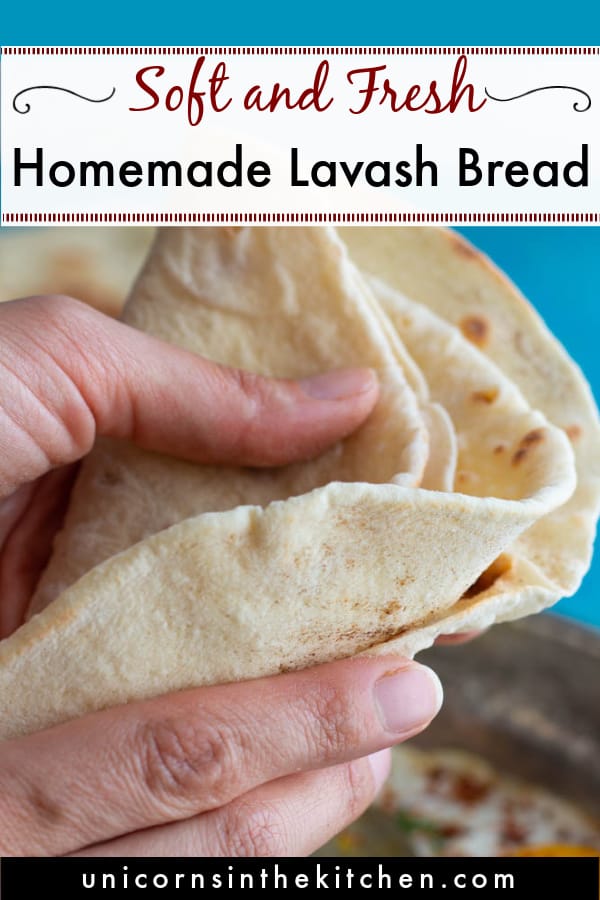
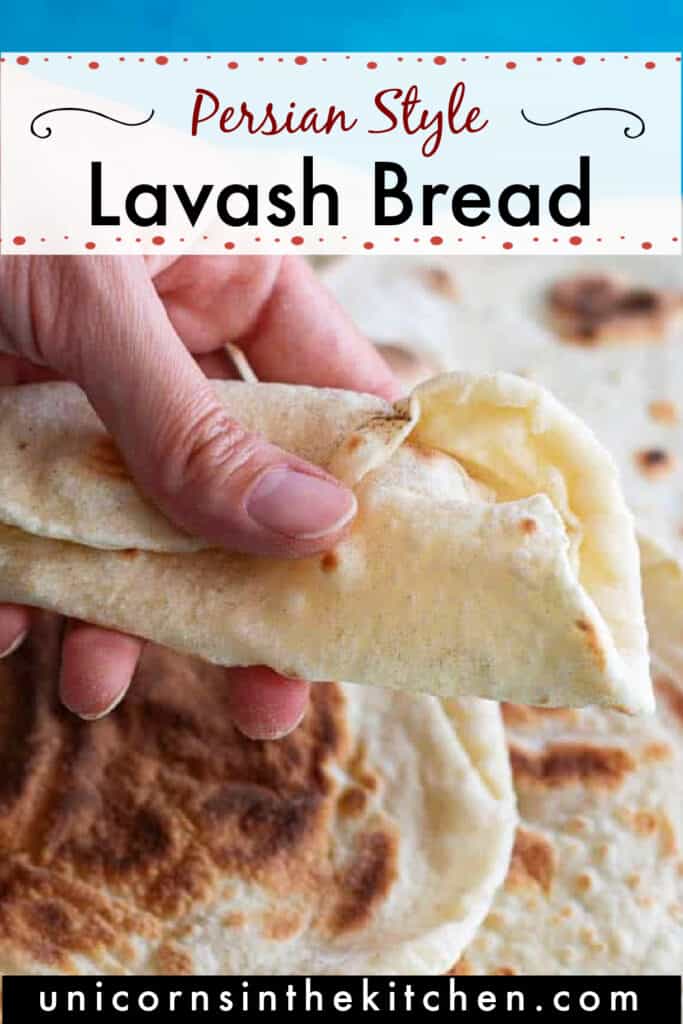
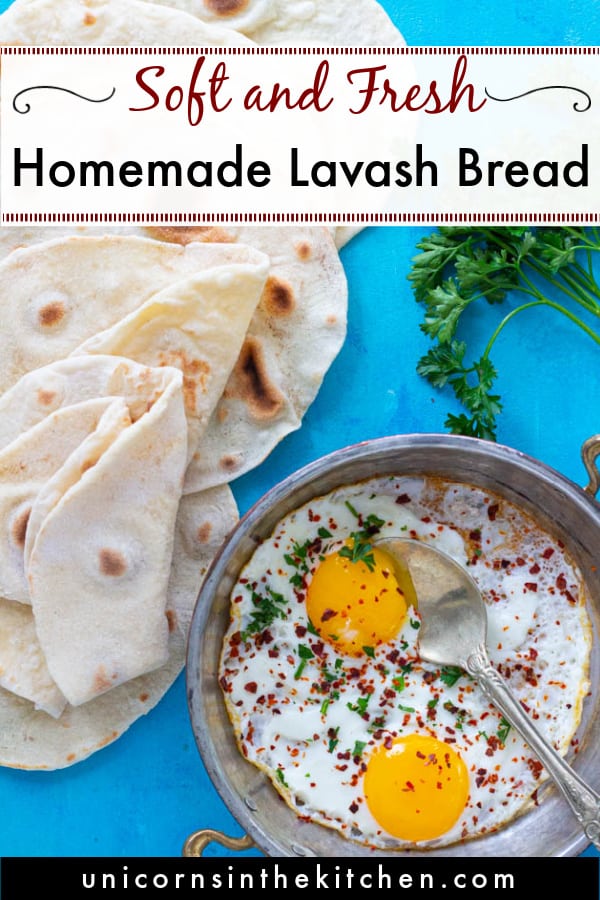
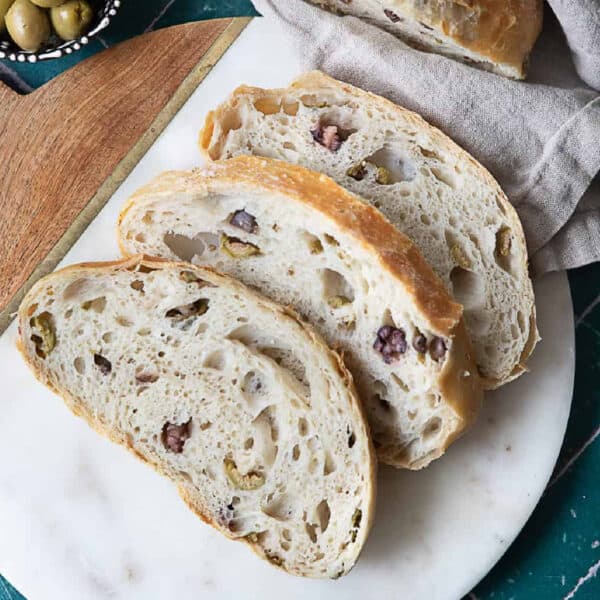
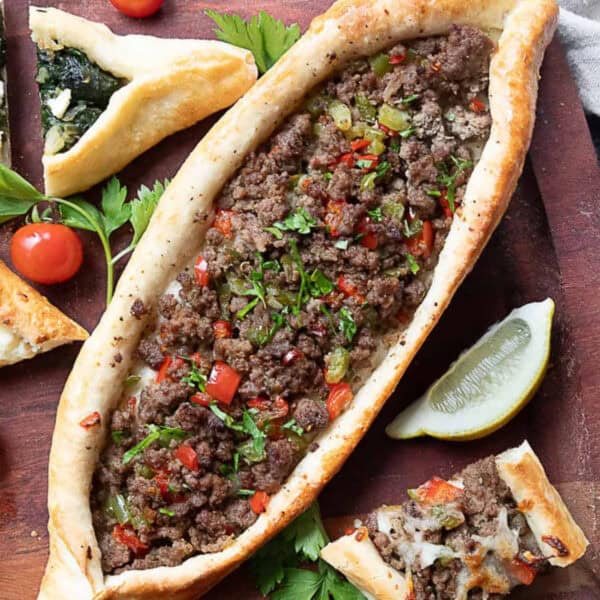
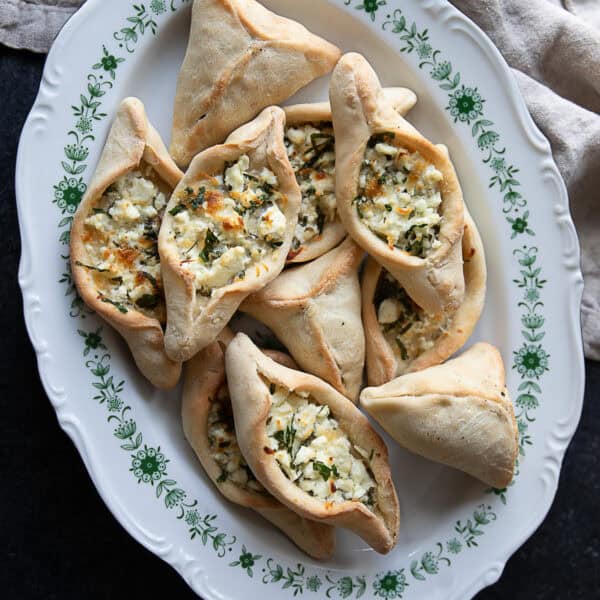
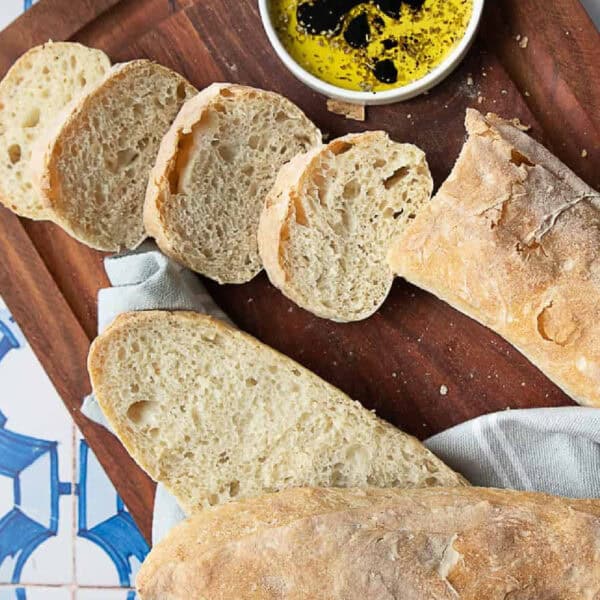









I’ve made Lavash bread many times but I have a special request. I need to cook almost 80 pieces. Can I cook them in the pizza oven?
Yes, but it’s best to test a few to make sure the temperature and timing works.
It worked brilliantlly and my Iranian friend highly approved of them! I found 16 pieces was better than 20, else they were very small and it takes longer to fry them all.
I made Lavash today for the new year. It was pretty yummy, and forgiving. The dough was way too sticky, almost liquid before it rose, and we had to add extra flour. It took a long time to cook it all, and soooo much flour to keep it from sticking to things. The kitchen was a mess! I think the resulting bread was way too floury. Is there a way to keep the lavash from sticking to everything when you are rolling it out without using to much flour?
Thank you for the good easy recipes.
Sal-e-no mobarak!
I recommend rolling the lavash dough ball in some flour, dust off the extra and then roll it out on a well flour surface.
amazing recipes thank you
Can you use non-dairy milk?
Yes, as long as it’s not sweetened.
Absolutely scrumptious! easy on point recipe. It’s my go-to bread to make sandwiches/wraps, dips such as hummus, baba ghanouj, labneh, olives & tomatoes. my fave mezza plate! try this recipe. you’ll love it.
Thank you so much Vina for your kind comment! Glad you enjoy this bread!
I LOVE this recipe. So easy to make and I find that I can usually get about 24 out of the recipe. I freeze most of them. Ways I use lavash is sandwiches, wraps, and even as a personal pan pizza crust.
I follow your website because so many of the recipes are very familiar to me, however I can’t help but notice how biased you are when giving credit to origin of recipes.There is absolutely no debate on the origin of lavash. It is authentically Armenian. When Armenians were making and eating this bread, Turkey and Azerbaijan did not exist. You make similar claims about a lot of other foods on this website. Your recipes are surprisingly identical to foods that my grandmother used to make. She was born in an Armenian village that is now within the borders of Turkey. Many of these recipes are Armenian in origin, but claim to be “Turkish”. It’s disheartening when ones culture is appropriated.
Hi Suzie, thank you for your comment. I have mentioned in the post that the origin is mostly believed to be in Armenia. I have so much respect for the food and culture of the region (I’m from the Middle East myself) and I’m sorry if at any part of these recipes you felt that your culture was being disrespected, it indeed was not my intention.